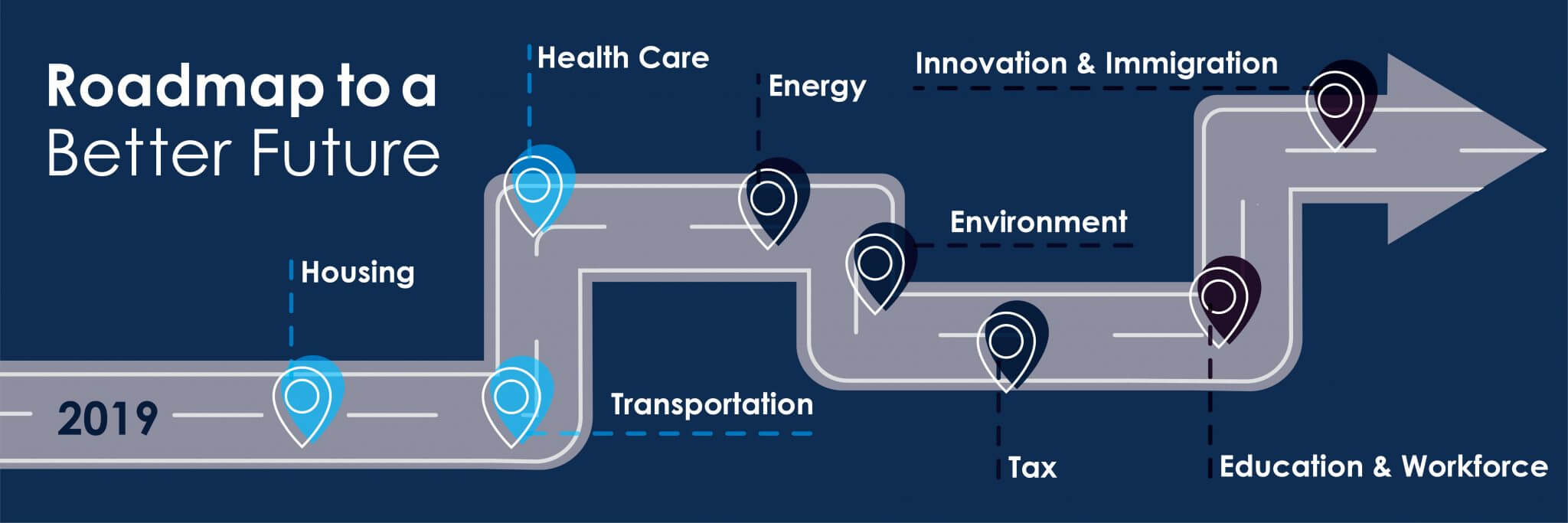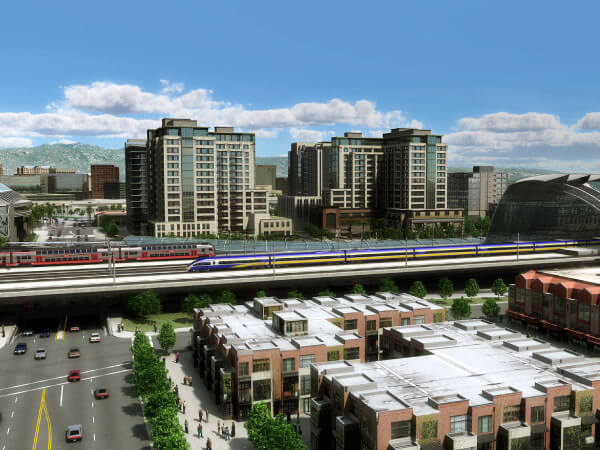Traffic Relief: It’s about time. Time wasted on increasingly congested commutes. Time wasted away from our families. Time lost traveling between home and work.

As our 2019 Silicon Valley Competitiveness Project data shows, between 2010 and 2017, average commute time in the Valley has increased by 21 percent. On average, Valley commuters spend 73 minutes per day in traffic, totaling 316 hours each year. Other than New York City, we lose more time in the daily commute grind than any other major innovation economy region in the country.
We can do better. That’s why, for the past three years, the Silicon Valley Leadership Group has been partnering with the Bay Area Council and SPUR to begin exploring regional solutions that match our regional economy and our increasingly regional traffic problems. From my perspective, any transformational transportation measure worthy of Bay Area residents’ consideration must meet the following aspirational goal: “Bay Area residents deserve a world-class, integrated, seamless transit system that connects and extends BART, Caltrain, the Altamont Commuter Express, SF Muni, VTA Light Rail, SMART, Amtrak, the Capitol Corridors, Ferries, Bikes and buses; to provide reliable, safe and efficient service for those who are transit dependent, and compelling enough to lure those of us who are current car commuters out of our automobiles.

While the Bay Area is often associated with blazing the trail for others, in this effort, we are actually following Los Angeles to the south and Seattle to the north. In November, 2016, the voters in those two regions passed transformational transportation measures that will generate $125 billion in Los Angeles County and $45 billion in Seattle. Not only will each of those initiatives provide locally needed funds for regional needs, but it makes each region stronger in competing for limited federal transportation dollars. The Bay Area would do well to follow in their footsteps.
To build and operate a world-class transit system, Los Angeles enacted a permanent one cent sales tax, with a belief that we all benefit from traffic relief and transit alternatives, and we should all contribute. A one cent sales tax increase in the Bay Area would ensure that both employers and residents contribute to congestion relief. For instance, in Santa Clara County alone, employers pay 42 cents of every dollar of sales taxes collected. Residents – all of us, along with tourists, pay the remaining 58 cents. While sales taxes are regressive, it is important to note that the highest costs for households with modest means are the costs for housing, health care and groceries – none of which are subjected to sales taxes.
As our annual “Silicon Valley Poll” of Bay Area residents revealed, the top two concerns of Bay Area residents are housing affordability and traffic relief. By building and operating a world-class transit system, we address the later and make room for the former. As we improve, extend and connect our transit systems, we can more thoughtfully provide homes and jobs at and around transit stations in ways that fit the needs of our communities and our families.
It took us decades to create the congested corridors that define the Bay Area’s daily commutes, and it will take years to build the improvements we need. At the Silicon Valley Leadership Group, we believe the time to start tackling traffic at a regional scale is now. We’ve wasted too much of our lives in the grip of gridlock. Let’s not waste more time delaying the solutions needed to end our traffic delays. Join us. For more information, contact me directly at cguardino@svlg.org.
– Carl Guardino, CEO, Silicon Valley Leadership Group | July 15, 2019
Editors Note: The Roadmap to a Better Future series covers our eight policy areas and highlights priorities on the 2019-21 workplan. Jason Baker is the Vice-President of Transportation, Housing & Community Development for the Silicon Valley Leadership Group. In this role, he works with both public and private leaders throughout the region in order to shape decision-making related to transportation infrastructure, housing and related funding initiatives.





